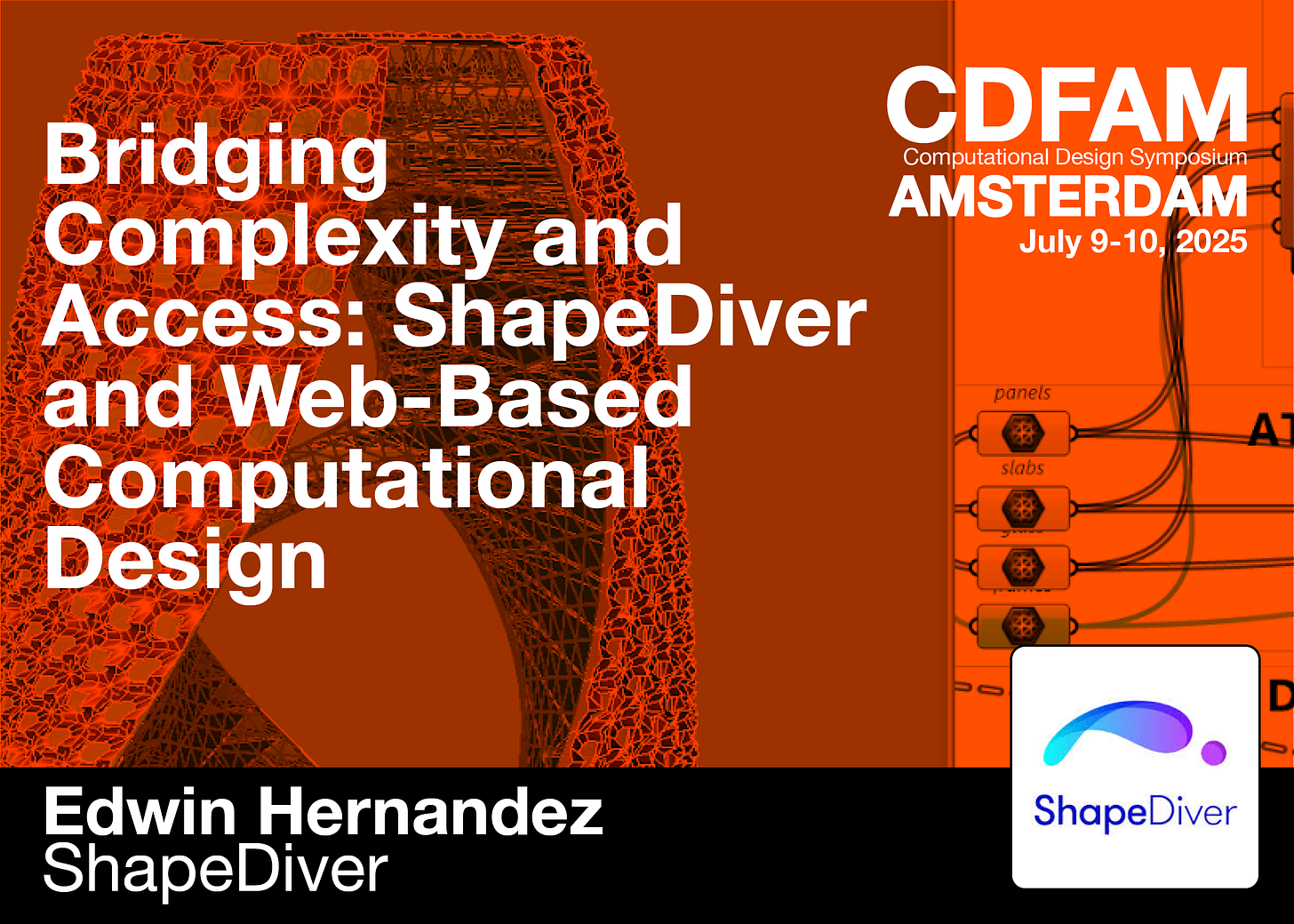Bridging Complexity and Access: ShapeDiver and Web-Based Computational Design
Ahead of CDFAM Amsterdam, a conversation on scalable, no-code computational design workflows for orthotics, architecture, and advanced manufacturing
Computational design workflows are increasingly being called on to produce not just geometry, but data—data that can be reused, interrogated, and reconfigured by multiple stakeholders across a project.
For those building customizable medical devices, orthotic systems, or architectural components, the ability to share and adapt these parametric models through the web—without writing backend infrastructure—is becoming not just convenient, but essential.
In our latest interview, we speak with the team at ShapeDiver, a platform purpose-built for publishing and managing parametric models online. Built around Grasshopper and the Rhino geometry kernel, ShapeDiver allows designers and engineers to deploy algorithms as accessible web services.
This means anyone—from clinicians to sales teams to fabrication partners—can interact with a model without ever opening Rhino or writing code.
From Tool to Platform
ShapeDiver’s most successful use cases haven’t been in consumer product customization—which, despite years of promise, has rarely proved viable at scale—but rather in structured, repeatable workflows where expert input is paired with variable patient data, spatial parameters, or manufacturing constraints.
In the interview, the ShapeDiver team highlights three production-ready applications:
Orthobroker’s OrthoSolid platform, which automates the design and production of orthoses and prosthetics from patient scans
CustoMED, which uses ShapeDiver to generate patient-specific surgical instruments based on clinician-defined planning inputs
These examples demonstrate that mass customization works best when it's grounded in expert use—not when it’s offloaded entirely to end users. In medical and orthotic fields, ShapeDiver acts as a bridge between scan data, surgical planning, and manufacturable geometry. What emerges is not a consumer-facing configurator, but an integrated system.
Sharing Algorithms Without Sharing Code
Beyond healthcare and wearables, ShapeDiver is gaining traction in architecture and product design—particularly where design teams need to collaborate with clients or consultants without exposing proprietary models or requiring plug-in-heavy local setups. With tools like Speckle integration, access control, and interactive UIs built directly in Grasshopper, ShapeDiver supports:
Real-time client collaboration and model exploration
Early-stage design studies based on variable constraints
Secure sharing of geometry logic with manufacturers or stakeholders
As the team notes in the interview,
“Democratizing computational design doesn’t mean dumbing it down—it means making it usable.”
And usability in this case means performance diagnostics, geometry caching, security, API integration, and a viewer interface that understands the intent of the model.
No-Code Doesn’t Mean No Capability
The ShapeDiver approach stands in contrast to emerging browser-native CAD tools. While those offer accessibility, they often lack the geometric robustness or ecosystem depth of Rhino + Grasshopper. ShapeDiver's focus is not to replace parametric modeling, but to extend it—to expose it selectively, securely, and usefully, without asking every user to become a developer.
📍Meet the ShapeDiver team at CDFAM Amsterdam
If you're building a digital workflow around custom medical devices, parametric components, or collaborative design interfaces, ShapeDiver will be at CDFAM Amsterdam, July 9–10, 2025. It’s an opportunity to discuss how their platform might support your application—and to connect with others working at the intersection of computation, automation, and production.


